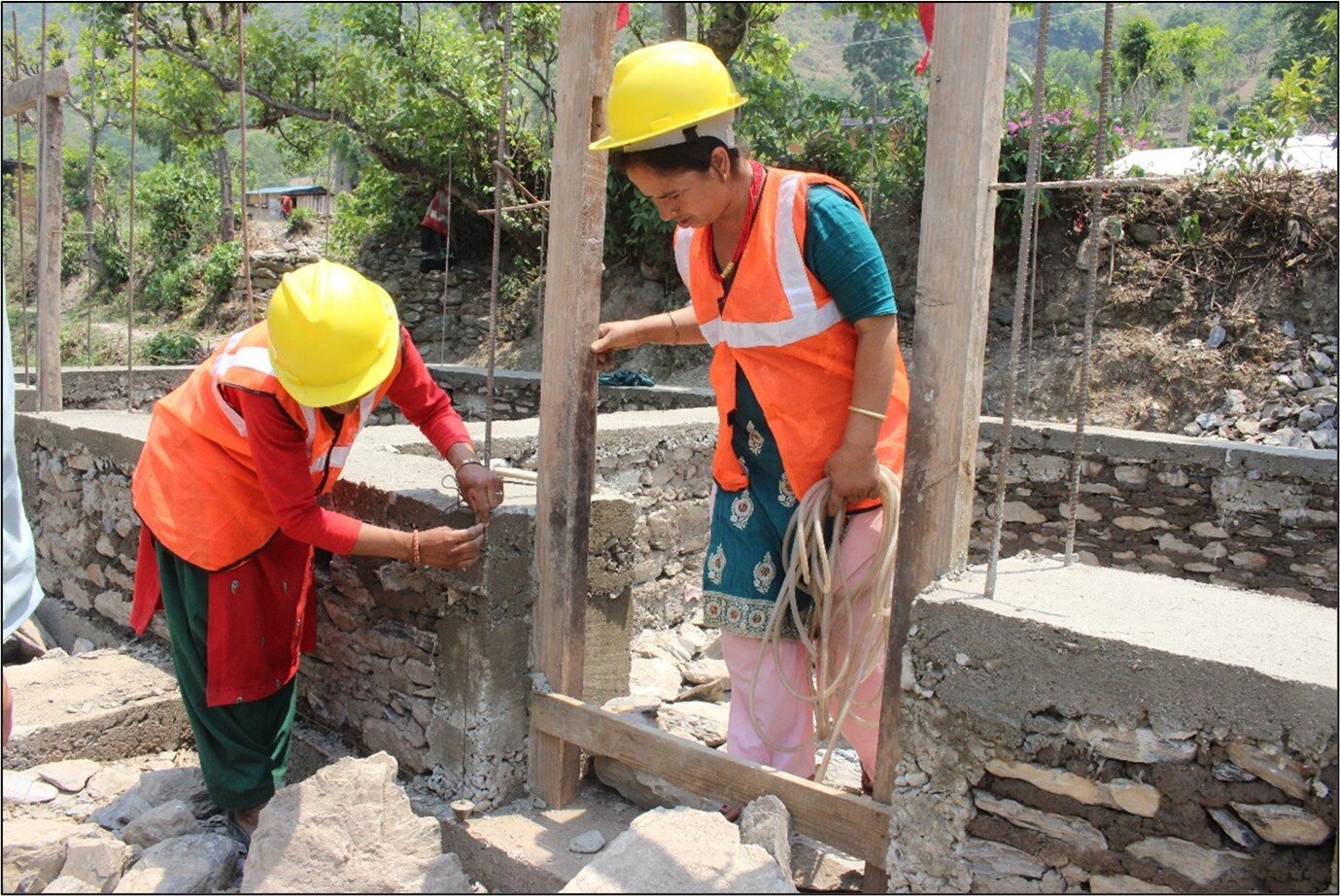A 6.4-magnitude earthquake struck Nepal’s Karnali Province in November 2023, causing extensive infrastructure damage. Helvetas is working to foster resilient and inclusive reconstruction while developing a skilled local workforce proficient in earthquake-resilient construction.
-
Project NameSkills and Reconstruction Project
-
Project Phase2023 to 2025
-
FundingThis project is an SDC mandate.
-
Thematic focusHumanitarian Response
The 6.4-magnitude earthquake that struck Nepal’s Karnali Province in November 2023 caused loss of life, hundreds of injuries and extensive damage to critical infrastructure. It is estimated that around 62,000 homes in 13 districts were damaged, exposing at least 250,000 people to post-disaster hazards and risks. Despite the relatively low magnitude of an earthquake, the high level of damage is attributed to stand-alone stone houses on mud mortars without proper structural support and ties — deficits that will be addressed in reconstruction efforts.
Helvetas is working with local government and partners to foster resilient and inclusive reconstruction. Together with the local authorities, we identified priority reconstruction sites to focus on in earthquake-affected areas.
Given the expansive reconstruction needs across the province, training a skilled local workforce that is proficient in earthquake-resilient construction is another key aim of the project.

Training a skilled workforce
Many lessons were learned in the hands-on experience that followed rebuilding after the devastating 2015 Gorkha earthquake – including the necessity of having a workforce with the right skills for reconstruction efforts and ensuring gender sensitivity and social inclusion in the delivery of all services. To date, 240 local masons, 19% of whom were women and 64% of whom were from disadvantaged groups, have completed the first round of masonry training on earthquake-resilient construction. This is the first of many cohorts that will go through the training. This training enables participants to rebuild their own homes, creates a skilled workforce for broader reconstruction efforts, positions these graduates as leaders within their communities, and creates pathways for better employment opportunities in the future.
Rebuilding safer, more sustainable community spaces
Following initial feasibility studies and needs assessments, the rebuilding of essential community hubs begins with two schools and two health centers. All buildings are constructed with earthquake-resilient methods to help them withstand future risks.

